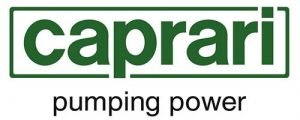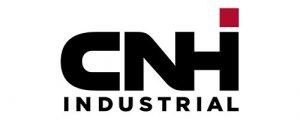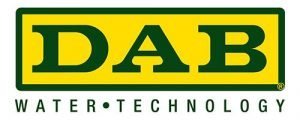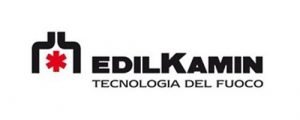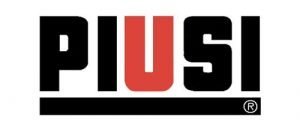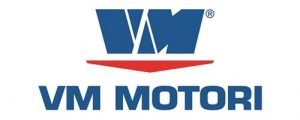- Prototypes
- February 2, 2024
Versatile and rapid, 3D printing allows you to create prototypes and parts intended for the most diverse uses and sectors: from automotive to food, from medical to aerospace. However, what makes a prototype unique is not only the chosen 3D printing technology, but also the material from which to start providing the final part with particular mechanical and aesthetic properties.
We can group the most common materials for 3D printing into three categories: metals, plastics (so-called thermo-polymers) and resins. Selecting the starting material often precedes the choice of the printing technology to be used, since the final result depends on the combination of the two factors: a functional prototype that responds to the particular needs of the sector in which it will be used.
Below we will discuss the materials that can be managed by 3D printing solutions (a poly additive printing process).
However, it is good to remember that there are also subtractive 3D manufacturing, which expand the range of materials in which a prototype can be created (e.g. CNC milling) and which will be discussed in a different article.
Metals: Steel and aluminium
Aluminium 3D printing
Aluminum alloys represent the right compromise between lightness and solidity, although their resistance is lower than that of steel. Components and prototypes made with this material (used in the form of powder) are used in the automotive, aeronautical and aerospace industries.
The presence of alloying agents (materials added to the metal) such as silicon, copper and magnesium improve the physical and mechanical properties of the final product, giving it greater strength, resistance in welding processes – vital for the creation of complex and large structures – and in heat treatments.
The 3D printing techniques used for this type of material can be direct (such as DMLS or SLS) or reverse, such as Quick Sand Casting – making the mold in sand and subsequently casting the alloy.
Among the main aluminum alloys used for 3D printing prototypes and components are:
- Aluminium AISi7 (Quick Sand Casting)
- Aluminium AISi9 (Quick Sand Casting)
- Aluminium AISi10 (DMLS/Quick Sand Casting)
- Aluminium AISi11 (Quick Sand Casting)
- Aluminium AISi7MgTi (DMLS/Quick Sand Casting)
- Aluminium AISi9Cu1 (DMLS)
Alloys rich in silicon, typically used in die casting, are not very suitable for prototyping as they tend to create internal defects, especially if processed by gravity casting.
Steel 3D printing
Suitable for technical applications in the mechanical, medical or engineering industries, steel, always in the form of metal powder, is used in 3D printing processes to create parts that are particularly resistant to corrosion.
Based on their mechanical characteristics as well as fields of use, steels for 3D printing can be classified into:
- Stainless steel, highly resistant to corrosion, with a good saldability and cold workability
- Bearing steel(for auto bearings, motor balls, rollers and rings), with elevated durability, resistance to wear and a good non-deformability
- Hardening steel(for treating superficial cement damage and for hardening), the metallic surface is particularly tough, durable and workable.
- Tempered steel(employed only for manufacturing components that are suitable for mechanical stress), hard to be deformed and fracture resistant
The most used 3D printing technique for metal parts and prototipes is
the Direct metal laser sintering (DMLS), to create final parts
with complex structure, highly detailed but particularly light.
Cast iron
Cast iron Quick Sand Casting
Cast iron is a special type of alloy that is obtained only under certain chemical composition and cooling conditions. Therefore, it is not possible to make cast iron parts without a mold.
Modern techniques luckly enable us to create of non-refractory silica molds directly from 3D printing processes. these are then processed by a cast iron foundry which fills them with the correct alloy, in the right temperature conditions, with the correct additives and the right solidification times (it is good to remember that various unwanted materials could also be obtained from a cast iron if something is not proceed correctly. For example, cooling too quickly could form cementite or iron carbides, all substances that are too hard or fragile for real use).
There are mainly two varieties of cast iron that can be used in 3D printing processes: lamellar (also called “grey”, the most widespread and identified by EN standards with the acronym GJL) and spheroidal (abbreviated GJS). In the first type of cast iron, graphite appears in the form of flakes, and gives the material good mechanical characteristics such as resistance to compression, shear, wear, as well as vibration dampening capacity and good workability. Ductile cast iron, however, is characterized by spheroidal graphite, where the shape gives the material a particular ductility. Cast irons can then be classified based on their metallic matrix (the structure that binds the various grains of cast iron together). There are:
- ferritic cast irons, characterized by high ductility and magnetic permeability
- pearlitic cast irons, in which hardness exceeds ductility
- ferritic-pearlitic cast irons, presenting intermediate characteristics compared to the two previous types
Suitable for all those applications requiring superior performance in terms of wear and corrosion resistance, as well as thermal stability, cast iron can however be subject to contraction and deformations during the cooling process. It will therefore be necessary, alongside with the correct design of the piece, to carefully manage the printing parameters, thus guaranteeing the creation of reliable and quality components.
Among the most widespread cast irons in fields ranging from general mechanics to hydraulics there are:
Plastics
Making prototypes and plastic parts using 3D printing requires the use of two
types of materials:
- Thermoplastics, including PLA, ABS (Acrylonitrile Butadiene Styrene), PA (polyamide 6 or 12) commonly called Nylon, PETG, Nylon and TPE (Thermoplastic Elastomer), represent the most widespread category. What distinguishes them from thermosetting polymers is their ability to undergo reversible melting and solidification cycles. During heating, thermoplastics become moldable into the desired shape, a process that can be repeated without degrading the material’s properties.
- Thermosetting plastics, whose polymers create irreversible cross-links during the polymerization – induced by heat, light or appropriate radiation –, transforming them into solid and infusible materials afterwards. Unlike thermoplastics, thermosets decompose, without the possibility of reforming once cooled. This behavior makes them non-recyclable and impossible to transform back into their original components. Thermosetting materials such as EP (Poliepoxy) are used for their particular dimensional stability and mechanical resistance, a characteristic that remains even when subjected to high temperatures.
As with metals, choosing material depends on the properties desired for the specific application and the capabilities of the SLS 3D printers used.
Resins
For 3D printing of components and prototypes, different types of resins, or photopolymerizable liquid polymers, are used in processes such as stereolithography (SLA). Some commonly used types of resins include:
- Standard Resins: these can be generic resins or formulated to replicate specific materials such as ABS or polypropylene, offering a smooth, matte surface, making them suitable for design verification.
- Flexible resins (or rubbers): used for printing flexible or rubbery parts, these resins offer a wide range of hardnesses, from the softness of an elastomer to greater rigidity. They are useful for the production of gaskets, protective shells and components that require particular flexibility.
- Polyurethane resins: transparent or translucent, they are ideal casting resins for producing – using Vacuum Casting technology – prototypes intended for inspection, models that require internal visualization of details and other lenticular objects. These resins use a silicone mold obtained by copying a stereolithographed or CNC milled master to produce maximum detail.
- Heat-resistant resins: designed to withstand high temperatures, they are suitable for applications that require greater thermal resistance, creating parts that may be exposed to high temperatures during use. They are created by specific formulations of thermopolymers that can be cast only once or by vacuum casting of specifically formulated mixtures.
In any case, the choice of material depends on the specific needs of application. Each material varies in terms of mechanical properties, chemical resistance, hardness, glass transition temperature (Tg) and other characteristics. Furthermore, constantly evolving 3D printing technologies lead to a constant development of new resins, with improved properties and capable of promptly responding to the growing needs of the sectors.
The range of materials to draw on for 3D printing is wide but the final choice will fall on material capable of giving the final object peculiar physical and mechanical characteristics, also preserved and enhanced by the printing technology that will be used.
If you want to create a project that includes 3D printing of components but you are not yet clear which material might be right for you, contact the Prototypes team.
Prototypes Services
With Rapid Prototyping services we can make your designs a reality by producing functional parts in plastic, rubber, aluminum and cast iron in a very short time, reducing your “Time to Market” and enabling overall project cost containment.

3D CAD

Rapid Prototyping in metal and plastic

Reverse Engineering

Equipment construction

Castings supply

Mechanical design

Tridimensionalization

Parametric modeling
Applications
-
Grids
-
Caps
-
Knobs
-
Burners
-
Wok Supports
-
Bathtubs
-
Distributors
-
Shut-off valves
-
Control valves
-
Pump body
-
Carrier lantern
-
Mouthpieces
-
Valves
-
Shredders
-
Open Impellers
-
Closed Impellers
-
Single-channel impellers
-
Speakers
-
Circulators
-
Supports
-
Engine shields
-
Inverter boxes
-
Carcasses
-
Finned masses
-
Streetlights
-
Racing Components
-
Aluminum frames
-
Engine cylinders
-
Motor heads
-
Brake calipers
-
Clutch Crankcase
-
Engine crankcase
-
Gearboxes
-
Frame elements
-
Forks



